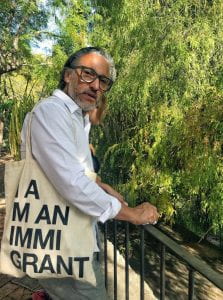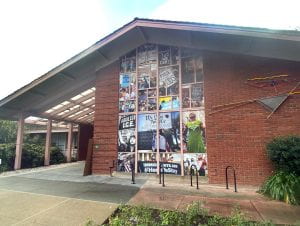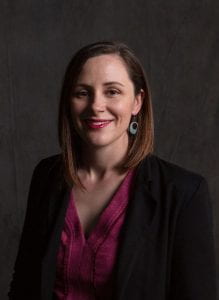
Resonance and Connection
Brian Komei Dempster in Conversation with Ifeoma Nzerem, Coordinator for Anti-racism, Diversity, Equity, Inclusion and Faculty Excellence
When did you realize you had a passion for writing?
In my formative years, when I was quite young, my parents signed me up for writing classes. I remember writing a story when I was around preschool age; I personified a rock, and its name was Loafer. That is my first memory of loving creativity, loving writing, and feeling the power to create. I found my literary passion as an undergraduate at the University of Washington. I was taking an Asian American studies course learning about Japanese American wartime incarceration. I was taken aback that this was really the first time I’d heard of this historical event. I remember going home that day and asking my mom, “Did you know about the camps? Were you in the camps?” She said that, since she was a child back then, she couldn’t remember the experience, and, as a result, there was not much to say. But I discovered a deeper psychological layer when I tried to ask my aunts and uncles who could remember these events: some were willing to speak about their experiences while others were reluctant to do so.
I became obsessed with the idea of writing about the Japanese American incarceration–not just the event, but the silences, the withholding, the ways in which that was a form of protection for the younger generation. I found that the older generation was trying to protect us and not hurt us by passing down that trauma. But, at the same time, many of us wanted to know that story and wanted to give voice to what had happened to them, because their imprisonment was an injustice. So, as an undergraduate, I wrote a lot about this subject, and these themes informed my first book of poems, Topaz.
How do you feel like that work has led you to USF in any way, or how did you end up here?
I was hired as an adjunct in 2001 into what is now known as the Department of Rhetoric and Language. I had a lot of friends who worked at USF and talked about its mission of social justice, honoring diversity, and also supporting the work of artists and scholars who give voice to marginalized communities and stories that need to be heard in the culture. At the time, I was a caretaker of my deceased grandfather’s Buddhist church in San Francisco’s Japantown, which was only a 5-10 minute drive to USF. And I was in this church finishing my first book and teaching community-based courses at the cultural center down the street. I wanted to be able to further my academic career, and I was excited to join USF and then later be hired as a full-time faculty member in 2002. In my 20 plus years with USF, I’ve taught rhetoric and language, creative writing, Asian Pacific American literature, and graduate courses in the Asia Pacific Studies program. All the while I have been working on poetry, and one thing I love about USF is that it really supports the work in a tangible way. For example, I had faculty development fund support and a sabbatical in 2017. Beyond that, the moral and personal support that administrators and colleagues have provided has been amazing.
How has winning the Guggenheim Fellowship affected your writing?
My fellowship period started in July, so I’m early on, but I can already feel the impact. I understand that there are several layers to the process. I would say the first layer is the acknowledgment of getting the recognition. It’s a stunning, humbling, affirmative experience, and processing that initially came with surprise and then the gratitude and acceptance. It’s an acknowledgement that my past work has value. Now that I’ve moved through that stage, I am ready to focus on writing. The opportunity gives me what I would call a healthy accountability, because I’m now a part of the history that exists for the Guggenheim Fellowship. I look at this list of people and see what they’ve accomplished and feel like I have a responsibility not only to my own artistic consciousness but also to the collective consciousness of what it means to be part of the circle. My father was a Guggenheim fellow in 1981 as a music composer, so there’s a father-son connection as well. The overall sense is hard to describe in just one way, but the fellowship has given me another form of motivation, confidence, and freedom.
I’m currently working on a third book in a trilogy. The manuscript can stand alone but is also meant to accompany the first two books. The first book, Topaz, is about the legacy and aftereffects of the Japanese American wartime incarceration legacy and how that relates to issues of race, gender, sexuality, and identity in a contemporary context. The second book, Seize, centers on my son Brendan, who’s 18 now. He’s a brave soul, and he’s been through a lot. In Seize, I present a father-son quest and explore how to navigate having a son with special needs–the emotional, psychological and everyday territory, the relational territory–and then connect that to other forms of seizure and incarceration historically and now.
The third book, currently titled Dust and Rain, focuses on tying together those threads and strands of the first two books, but the artistic challenge is to avoid repeating what I’ve done before and to find how to advance the work. There isn’t a singular theme in mind at this time. It’s more like a symphony or orchestra weaving together the different elements of my previous works. I’ve found writing this book to be an ancestral and spiritual experience. I’ve gone back to the ancestors, like my grandfather, and this process has catalyzed more lyricism in this book than the previous two. I describe the work as a lotus sutra for the 21st century.
What events have evolved your writing strategy or writing focus over time?
I wouldn’t call forth a singular event, but what’s been most profound for me is the evolution of my son and his growth. Now that he’s 18, my poems no longer gravitate towards emergency crisis situations like going to the ER or us managing his seizures. His and our situation feels more nuanced, subtle, and complex as, fortunately, he doesn’t have as many of these medical events. He’s evolving, and it’s been a journey trying to write about my relationship with this human being, who is still nonverbal, as he goes through the frustrating experiences of puberty that he can not fully convey. At the same time, he expresses more love and more connection with us. So there’s a beauty and tenderness to his growth. There’s also a challenge of looking to the future and thinking, 10 years or 20 years from now, what does his life look like? How long can he stay with us or live in this home? Because there’s a large part of us that never wants to let him go. So, as we witness his transformation, we do our best to be observant and in tune with his evolution, because these are not things that we can talk with him about. He understands a lot of language, but he’s unable to express himself in words. So instead, we observe and communicate with him through eye contact and body language.
What are you looking to next?
I’m working on various things. I’m energized about this epic poem in the current manuscript that my writing partner has encouraged me to dive deeper into. This could eventually be split into many individual poems, so I’m interested to see what the piece will end up becoming. I’m looking forward to pushing the boundaries of theme, content, and artistic approach as far as I can. In the first two books, a coherent subject and theme anchored the narrative throughout. The through line of this third book is more spiritual–a reconciliation of past and present, of our many identities and selves; a holistic exploration of the world here and the world out there and ancestry and the future. It feels like there are several overlapping circles rather than a linear connection. I remember Dean Rader, a Guggenheim fellow and poet at USF, described his fellowship project as a Venn diagram, and that was helpful to think about. I want to see how many things I can connect and reconnect. I’d like to explore global and local connections, events that I haven’t written about and events that are personal to me. I think it was James Joyce who said, “In the particular is contained the universal.” This is a simple idea but a profound one. I want to be as particular and concrete as I can at the literary level–to describe things fully and beautifully and with some kind of taste and elegance. At the same time, I want to reach out and find a level of transcendence that goes beyond the literal, creates new resonances and connections.
I’m also working on a nonfiction manuscript called Brendan’s Garden. The topics vary, but I think of the project as anecdotes or snapshots of life with Brendan. I’m excited to mainly focus on the poetry project and then write the nonfiction when the work emerges organically. My goal is to have a largely shaped manuscript of my third poetry book by the end of the Guggenheim period in June 2024.






